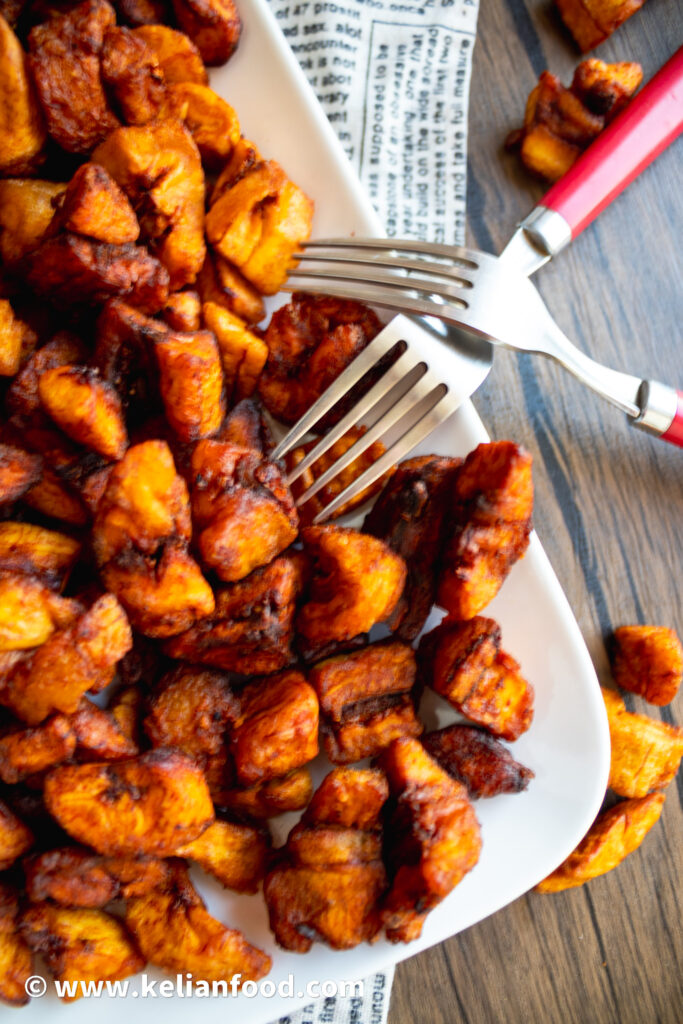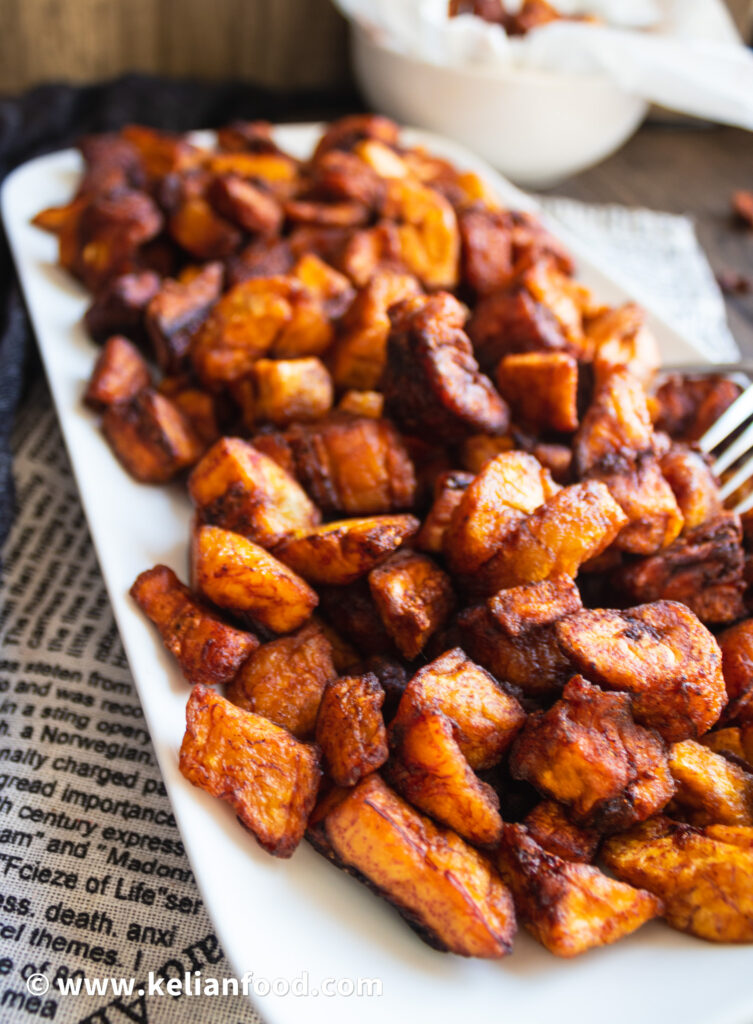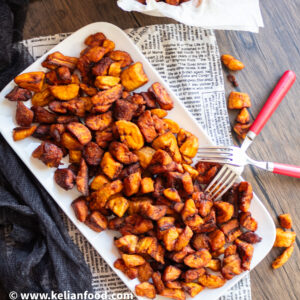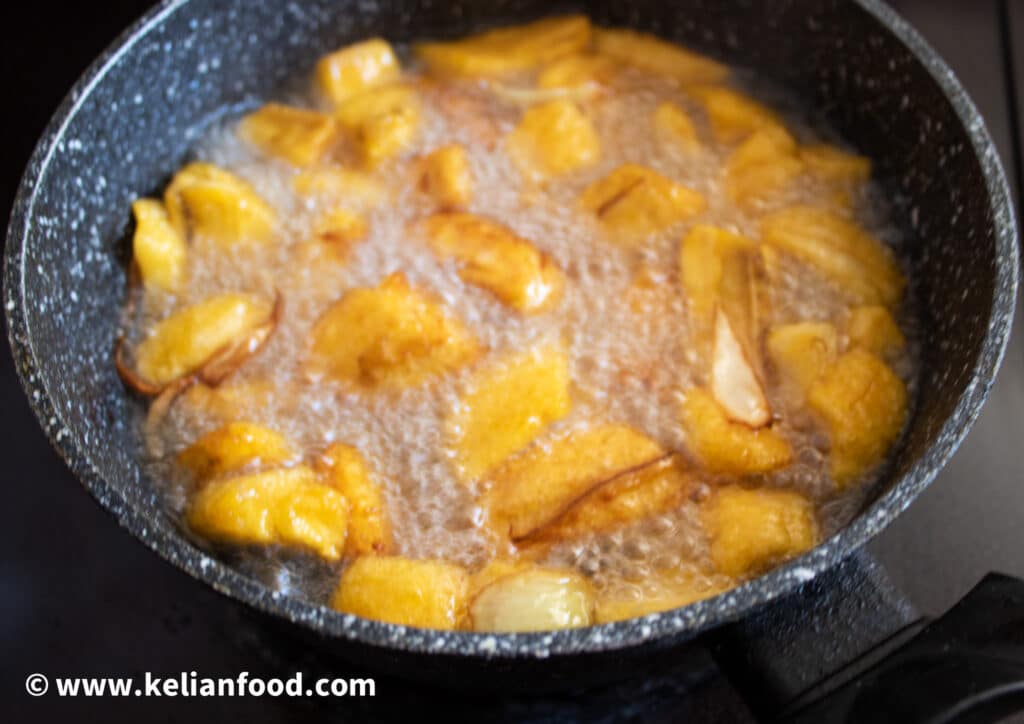
The best alloco recipe, with all my tips!
As I said in the previous post , this week we're going to talk about the Alloco. Today I present to you the recipe for alloco (Ivorian).
I know everyone here knows what I'm talking about, it's the basis in African cuisine! But hey I will still explain for those who do not know.

The Alloco is simply fries of ripe plantains cut into small squares . Plantains can be a little seasoned with salt before frying , and sometimes it can be fried with palm oil or refined oil
Alloco Origin
According to my research , the word alloco actually comes from Baoulé , a language spoken in Côte d'Ivoire. “Loko” means “ ripe and sweet ”.
The Alloco is the most popular 4 p.m. snack in Côte d'Ivoire . The Ivorians really love the Alloco, to the point where, there is even a special Alloco 😅 festival. This is due because of the opening of the allocodromes in the city of Abidjan!
Although plantain's fries are highly appreciated by Ivorians. They are also known in other countries with different names only. In Ghana, these are the Kelewele. I presented the recipe to you in the previous post. The Ghanaians just add more spices. In Benin , the name is sleep ! 🙂

Which plantain to choose for Alloco?
To make your allowances, you have to choose the really ripe plantains. The plantain's skin should be black at the limit. The more ripe the plantain, the more sweet it is.

How to make the alloco: the recipe!
The alloco recipe is really very easy and quick to make . After cutting your plantains, you add a little salt before switching to frying. So cutting really depends on you, here I did in small square , but you can also very well cut them into rings.


How to fry the Alloco?

- Above all, you must avoid frying your alloco in too hot oil. They will darken directly without really cooking. If you notice that the oil was too hot, remove a moment from the fire so that the temperature drops a little.
- Also avoid stirring the plantains too much at the start of the frying, otherwise they will stick. Stir when they how to change color
- Add half an onion to your frying oil . The onion will flavor the oil and the plantains too 😋
- Do not fill the pan too much during the fried so that plantains do not absorb the oil
- Remove the plantains using a spoon with holes : it is important to transfer them to a tray, a colander or a dish covered with wipers to absorb excess oil which has not been absorbed by the holes.

Ivorian Alloco
If you want to respect the original recipe for the Alloco as Ivorian moms do. will just have to use palm oil, not refined oil for frying 😉
How to eat Alloco?
The Alloco is accompanied very well with the meat : we have chicken, alloco fish for example. Without forgetting the famous Autieke Poisson , which is also used with the Allocos 😋.

You can also accompany your allocos with hard eggs and a spicy sauce as is the case at the time of snack at 4 p.m. in Côte d'Ivoire
How to warm the alloco
Reheat your oven allocos the next day . Avoid plunging them back into oil for a second frying! This is not a good idea 😅.

Here I arrive at the end of this post on the Alloco. Do not hesitate to check the previous post, if you want to try the spicy alloco or kelewele 😋


The best alloco recipe!
Ingredients
- 6 Plantains walls
- frying oil
- a little salt
- ¼ onion
Instructions
- Peel and cut your plantains into a singel or small square
- Sprinkle your plantain with salt and mix slightly
- Heat oil over medium heat
- Add half an onion to flavor the oil, then add the plantains. At the moment if the plantain changes directly color, it is that the oil is too hot to remove the stove for a few moment from the fire 1 minute will be enough for the temperature to drop a little. Otherwise (if there is no small bubble) increase the fire
- Fry 8 to 10 minutes until plantains are really brown. It should be noted that the more ripe the plantains, the more dark they will be at the end of the frying. It takes time to make it dry completely
- Remove the plantain with a ladle has hole and go directly to a colander or on absorbent paper to remove excess oil
- Serve either alone or with meat or with Attiéké Poisson! Bon appetit

THANKS
it looks too good